Students Gain Hands On Experience
The Physical Therapy Assistant program at the University of Cincinnati, Clermont gained valuable, hands on experience today at Premiere Physical Therapy and Abilities in Motion.
Carolyn Shisler, who leads the program at UC, Clermont said that this experience gives future physical therapist assistants the opportunity to hear stories and ask questions to recent and veteran amputees. “They are real people and students are able to hear their story and empathize with their life situation. Our students get to see the person and not the diagnosis,” said Shisler.
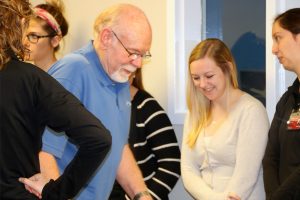
Caitlin Rausch is a student at UC, Claremont and she echoed those feelings. “It’s so different than being in the classroom. There, you don’t get to see patients and hear their backgrounds”.
Students heard an hour long presentation from experts and then broke into smaller groups to see demonstrations and interact with patients. The patients participating in the program had below knee, above knee and bilateral leg amputations. Each had different experiences that informed students and each saw this as an opportunity to invest in the future.
Andy Beardslee is the PT director at Premiere Physical Therapy and he understands the value of these types of experiences. “Many times, new students are apprehensive when meeting with amputees. They may have a fear of saying the wrong thing and this experience gives them a change to get comfortable with real people.”

Students would be hard pressed to find a better environment for this type of learning as Premier Physical Therapy is the regions leader in working with amputee patients. Their partnership with Abilities In Motion allows a patient to meet with their prosthetist and physical therapist all in same visit.
Shisler summed up the experience this way, “PTAs work in many different areas of physical therapy, Amputees are one facet of the field. It’s important that they are able to work with people and help them reach their full potential.”
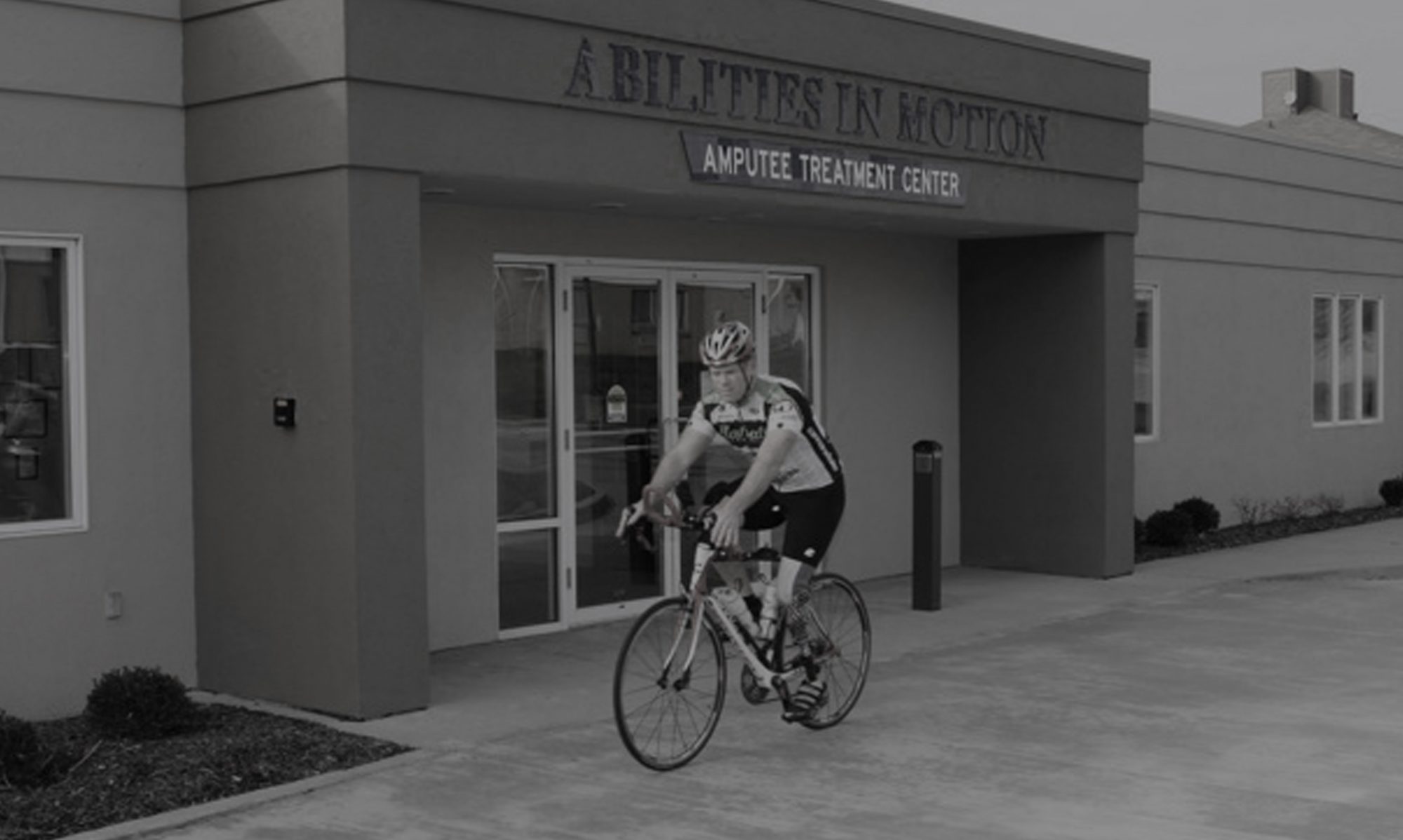
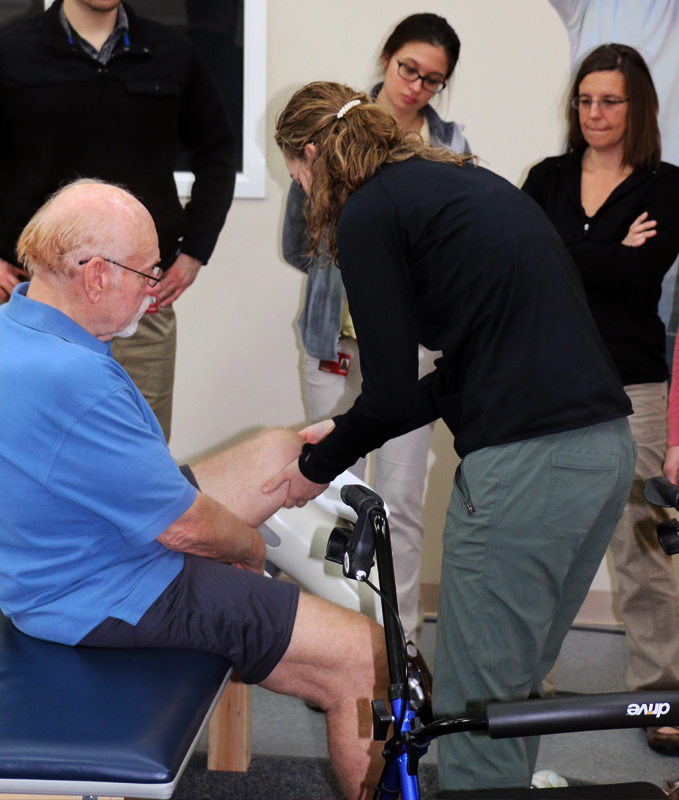

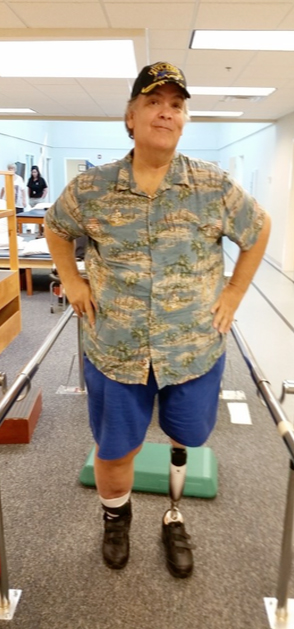 Rodney Jones first came to Abilities In Motion in the summer of 2013. A truck driver for several years, Rodney was injured while on the job. After several failed attempts to reset his leg for healing, the decision was made to amputate Rodney’s left leg.
Rodney Jones first came to Abilities In Motion in the summer of 2013. A truck driver for several years, Rodney was injured while on the job. After several failed attempts to reset his leg for healing, the decision was made to amputate Rodney’s left leg.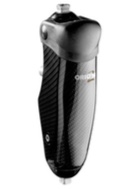 As a part of the rehabilitation process, Rodney initially used a prosthesis with a locking knee for 12 months. He then transitioned into using the technologically advanced Orion2 knee from Endolite.
As a part of the rehabilitation process, Rodney initially used a prosthesis with a locking knee for 12 months. He then transitioned into using the technologically advanced Orion2 knee from Endolite.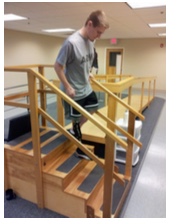 In January of 2012, Bob was involved in an automobile acci- dent. Due to his accident Bob had his right knee fused in slight flexion.
In January of 2012, Bob was involved in an automobile acci- dent. Due to his accident Bob had his right knee fused in slight flexion.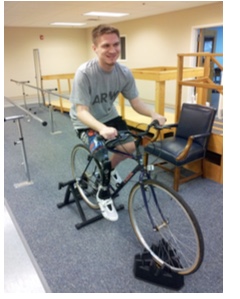 Bob’s next goal is to be able to cycle. As seen in the photo, he has converted his bike into a stationary unit. This allows him to learn how to
Bob’s next goal is to be able to cycle. As seen in the photo, he has converted his bike into a stationary unit. This allows him to learn how to
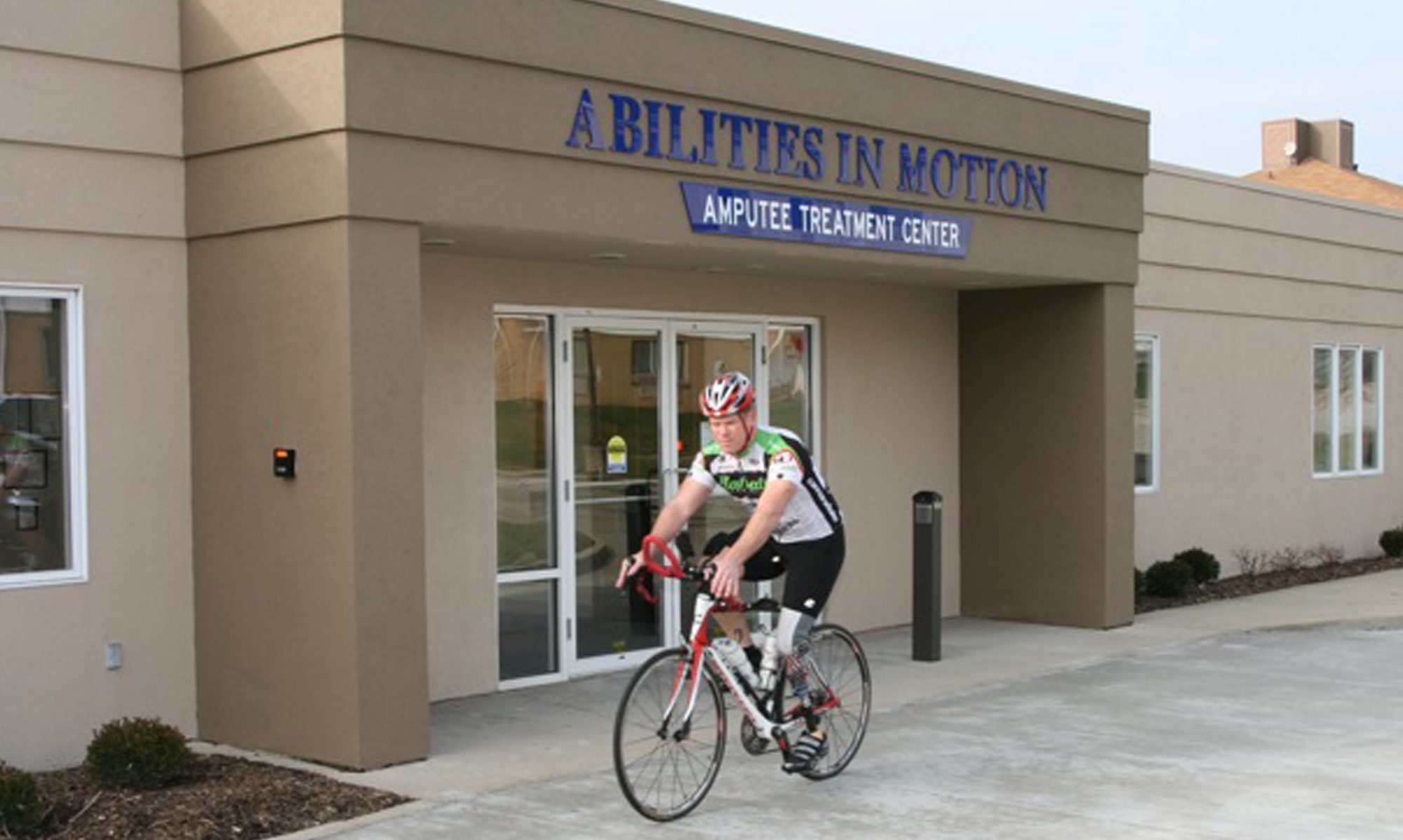

 Walter Lickliter, 57 had a right below knee amputation in July of 2004. Walter also has a left partial foot amputation. His main goal before surgery was to improve his balance and begin the process of learning to walk again. Within two weeks of being fit with his prosthesis, Walter said “I am encouraged by my progress from wheel chair to walker. I have not had any pain since just after the surgery”. He learned quickly through experimentation how to use socks to obtain a correct fit and does not feel his prosthesis limits him. “I like the comfort of my prosthesis and just being able to walk again”.
Walter Lickliter, 57 had a right below knee amputation in July of 2004. Walter also has a left partial foot amputation. His main goal before surgery was to improve his balance and begin the process of learning to walk again. Within two weeks of being fit with his prosthesis, Walter said “I am encouraged by my progress from wheel chair to walker. I have not had any pain since just after the surgery”. He learned quickly through experimentation how to use socks to obtain a correct fit and does not feel his prosthesis limits him. “I like the comfort of my prosthesis and just being able to walk again”.
 Sarah Ammons underwent surgery for a below knee amputation in 2002. Sarah said “I expected to have less pain, as I have a great deal of phantom pain”. She did not expect to be walking unassisted immediately, “I expected a long rehab”. Although undergoing a second surgery earlier this year, she is walking without assistance.
Sarah Ammons underwent surgery for a below knee amputation in 2002. Sarah said “I expected to have less pain, as I have a great deal of phantom pain”. She did not expect to be walking unassisted immediately, “I expected a long rehab”. Although undergoing a second surgery earlier this year, she is walking without assistance. Sam Crosby has a left below knee and a right partial foot amputation. For Sam, a former college quarterback, rehab went very smoothly. “I just expected to be able to walk and I pretty much did. I knew I would be able to walk without crutches”. Sam reported that he never really had any pain and that learning sock fit was easy.
Sam Crosby has a left below knee and a right partial foot amputation. For Sam, a former college quarterback, rehab went very smoothly. “I just expected to be able to walk and I pretty much did. I knew I would be able to walk without crutches”. Sam reported that he never really had any pain and that learning sock fit was easy. David Fischer became an above knee amputee just a few months ago in May. David says he wasn’t really sure what his expectations were prior to surgery as it happened so quickly. He said of his expectations upon receiving his prosthesis “I didn’t expect I would just get up and walk. I had a pretty good idea about the rehab process”. After initial fitting and physical therapy, David says he was more confident of being able to return to normal mobility. He has suffered from some phantom pain “but I’m managing well”.
David Fischer became an above knee amputee just a few months ago in May. David says he wasn’t really sure what his expectations were prior to surgery as it happened so quickly. He said of his expectations upon receiving his prosthesis “I didn’t expect I would just get up and walk. I had a pretty good idea about the rehab process”. After initial fitting and physical therapy, David says he was more confident of being able to return to normal mobility. He has suffered from some phantom pain “but I’m managing well”.